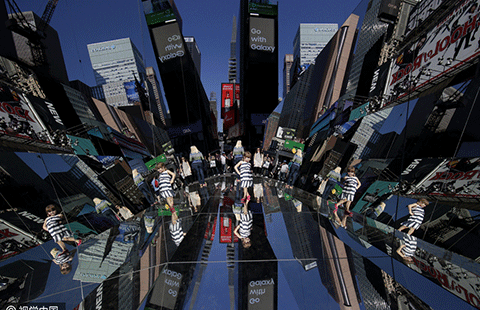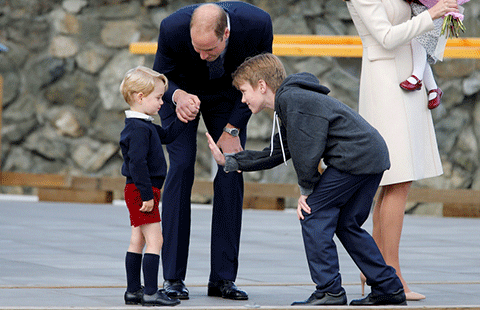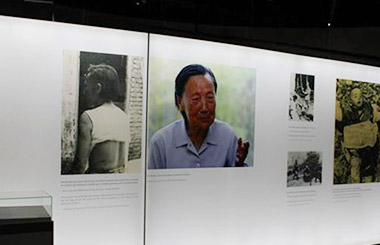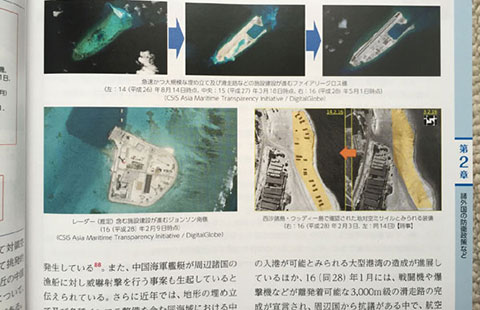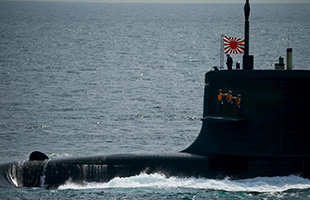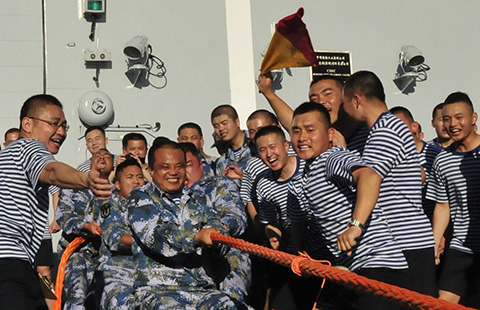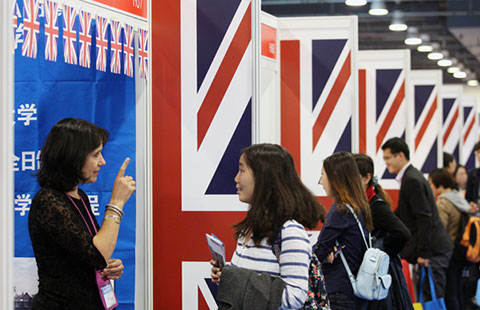Beijing, Manila to promote more trade
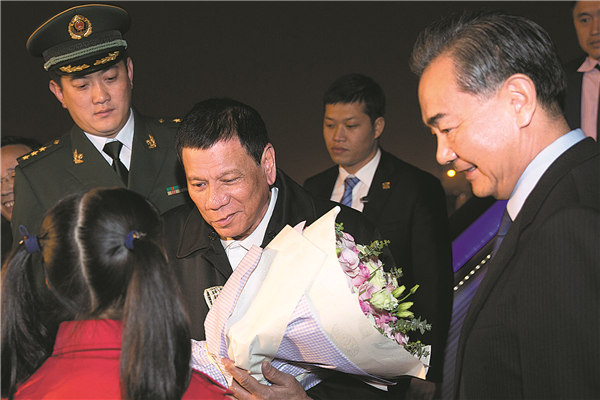 |
|
Philippine President Rodrigo Duterte, accompanied by Foreign MinisterWang Yi, is greeted at Beijing Capital International Airport at the start of his fourday state visit on Tuesday. HE XIAOHUI / FOR CHINA DAILY |
Before Philippine President Rodrigo Duterte arrived in Beijing on Tuesday evening for his four-day state visit, the Ministry of Commerce confirmed that Beijing and Manila were "actively preparing" for further economic and trade cooperation.
The potential outcomes "will be tangible", and will include expanded imports of fruits from the Philippines, Ministry of Commerce spokesman Shen Danyang told a regular news conference in Beijing.
The Philippines is currently the largest supplier of bananas to China, accounting for 82 percent of the country's banana imports. It also provides 70 percent of China's pineapple imports.
Bilateral trade has been overshadowed since 2012, when the relationship deadlocked over a territorial dispute that led to the Philippines unilaterally filing an arbitration case under Duterte's predecessor, Benigno Aquino III.
During the visit, both sides will "embark on in-depth discussions about ways to expand bilateral trade, promote and guide (Chinese) enterprises to expand investment in the Philippines and strengthen cooperation in fields including infrastructure construction", Shen said.
Foreign Minister Wang Yi said on Tuesday that Duterte has chosen to rebuild the friendship with China and return to dialogue and cooperation, and this "shows the wishes of the Philippine people and serves Philippine interests and national development, and no one and no force can prevent it".
Wang later greeted Duterte as the Philippine president arrived at Beijing Capital International Airport on Tuesday evening.
Chen Qinghong, a researcher on Southeast Asian and Philippine studies at the China Institutes of Contemporary International Research, said reinforcing economic cooperation with China will maximize Manila's interests.
China is now the Philippines' second-largest trade partner, its largest import source and its third-largest export market.




